This month we feature a report on the International Ladies’ Chess Tournament from British Chess Magazine, August 1897 won by Mary Rudge (born February 6, 1842). We have updated the notation where appropriate and added images and diagrams.
International Ladies’ Chess Tournament
It was a happy thought of Mrs. Bowles (hon. sec. Ladies’ Chess Club) that an International Chess Tournament for ladies would be a fitting event to be held in the Diamond Jubilee year of the Queen’s reign. The idea originated so far back as Whitsuntide, 1896, and Mrs. Bowles being of energetic character, set to work by speaking of the subject to several influential friends, and from most of these she received every encouragement. When she spoke to Sir George Newnes of the project, he with all a chess player’s genuine enthusiasm gave it hearty support, and promptly offered to subscribe the sum of £60 as first prize. This was a good beginning, and gave Mrs. Bowles great encouragement to proceed with the undertaking. Mr. Pillsbury wrote offering to raise £50 in the States, as a second prize – a most graceful act on the part of the hero of the Hastings Tournament. Other offers of prizes were made, and about last August or September, preliminary notices appeared in the press announcing that a Tournament would be held. Generally the intimation was most favourably received, but there were a few people who tried to ridicule it, and declared that women couldn’t play chess, and that such a Tournament would be a farce. Mrs. Bowles persevered, and being well supported by the members of the Ladies’ Club, a definite announcement was issued stating that the Tournament would commence on June 23rd, and that there would be representative ladies from various countries.
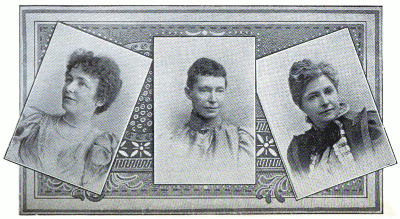
Mrs. Bowles (Hon. Sec.); Miss Rudge; and Mrs. Fagan
A large room – the Masonic Temple – in the Hotel Cecil was secured for play in the first week, and here a large gathering of chess players assembled on the opening day to witness the inauguration of the Tournament – the first of its kind in the world. The Hon. Horace Plunkett, M.P., opened the proceedings, and play commenced. The contestants were as follows: United States, Mrs. Worrall; Canada, Mrs. Stevenson; Germany, Fräulein Hertzsch and Fräulein Müllerhartung; Italy, Mrs. Fagan; Belgium, Mde. Bonnefin; France, Mde. De la Vingne; England, Lady Thomas, Miss Eschwege, Miss Field, Miss Fox, Miss Gooding. Miss Hooke, Miss Rudge, Mrs. Sidney, Miss Thorold, and Miss Watson; Scotland, Miss Forbes-Sharp; Ireland, Mrs. Berry and Miss Finn. As there have have been some misleading statements made in the press as to the right of some of these ladies to play for the respective countries they represent, we may be allowed to state that in every case they were fully warranted in playing for the countries to which their names are attached. It is quite true that some of the competitors are now domesticated in this country, but this only goes to show the cosmopolitan character of our population, and does not militate against their right to play for their own country. Mde. Bonnefin, for example, comes of a pure Belgium stock. Mrs. Fagan, though sister to Dr. Ballard, was born in Naples, her mother being an Italian lady, and she lived for years in Italy. As to the two German ladies, they both came from the Fatherland to take part in the Tournament; whilst Mrs. Worrall and Mrs. Stevenson both crossed the Atlantic for the same purpose. All such criticisms as “Oh! they were all British ladies, and they were only masquerading under foreign names” were therefore out of place, and the claims of the Ladies’ Tournament to be International are as well founded as those of the 1851 Tournament.
The principle rules of play were that two rounds were to be played each day, one in the afternoon, from one o’clock till 5 p.m., the other from seven o’clock till 11 p.m., with a time limit of 20 moves per hour.
It was a novel and indeed unique sight to see these lady players seated at the different boards. Many of them were evidently nervous at their unusual surroundings, the use of the clocks was plainly a heavy burden on some of their minds, and the scoring shell and pencil were regarded somewhat askance. The many spectators crowding round were also a cause of anxiety, whilst the heat on some of the days was very oppressive, though the room was well ventilated. Very many people thought that few of the fair combatants would last out the contest, with its two rounds a day for ten days, but in this they were wrong, for despite all the circumstances we have alluded to, none of the players except Miss Finn retired, and as time progressed they all seemed to play more steadily and with fewer symptoms of nervousness.
There were several favourites for chief place, Lady Thomas being favoured by reason of her Hastings performance. Mrs. Fagan was looked upon as a certain prize-winner by those who knew her. Miss Finn was much favoured by many who appreciated her genuine chess powers. Miss Rudge was a prime favourite with all who remembered her past career, and knew her steady and reliable style of play. Miss Thorold, too, was placed amongst the prize-winners; and Mrs. Worrall brought with her a good reputation from America. On the other hand there was unknown talent in the two young Ccrman ladies, Miss Hertzsch and Miss Müllerhartung, whilst Mrs. Stevenson was also “an unknown quantity.”
It was at the boards of the “favourites” that the general interest centred. It was soon seen that Miss Rudge was in capital form, and from the first she displayed those qualities of steadiness and tenacity for which she is renowned, and right through she carried all before her, and at the end of the sixth round she had won all her games. Mrs. Fagan was then a splendid second, as she had scored 5 wins with one game unfinished. Mrs. Worrall was 2.5 and 2 to play, and Miss Finn was 3.5 and one to play. On the other side some had done badly – Lady Thomas was only 2 and Miss Thorold 2.5. Miss Gooding was doing well, and had scored 5; Mde. Bonnefin was 4.
On Monday, June 28th, the place of play was removed to the Ladies’ Chess Club, continuing there to the end of the Tournament. Miss Rudge continued her successes, and it was not until the fourteenth round that a break was made in her score. In that round, however, she made a third repetition of moves, and this enabled Mde. Bonnefin to claim a draw, which was awarded to her. This made Miss Rudge’s score 11.5 and 2 to finish. Her nearest rivals were Mrs. Fagan, 10.5 and 1 unfinished game; and Mrs. Worrall, 9.5 and 2 unfinished. Then came Mde. Bonnefin with 9 all played, and Misses Thorold and Gooding with 8.5 each; Mrs. Berry also had 8.5 points. Lady Thomas had made some progress, and was 6 with 2 unfinished. Miss Finn unfortunately had to retire after the eighth round, owing to illness; this was a regrettable circumstance, because she might have ended a good prize-winner, as she had been playing very plucky chess.
Play continued very steadily, and when the end came it saw Miss Rudge carry off first honours with 18.5 out of a possible 19. Her play was marked throughout by care, exactitude, and patience. Someone said of her, “She doesn’t seem to care so much to win a game as to make her opponent lose it.” She risked nothing. she never indulged in fireworks for the purpose of startling the gallery; if she got a Pawn she kept it and won, if she got a piece she kept it and won, if she got a “grip” she kept it and won, if she got a winning position she kept it and won. Not that she always outplayed her opponents in the openings, or even in the mid-games, for the reverse was sometimes the case; but risking nothing she always managed to hold her game together, and then in the end her experience as a tournament player and her skill in end positions came in with powerful effect. The second prize was carried off by Mrs. Fagan, with a total of 15.5, in really brilliant style; for she played the “forward game” throughout, and if she sometimes tripped in her own combinations. the combinations were interesting. “Had she played less chess, she would have won more games,” someone said of her, not altogether without truth. The third prize was won by Miss Thorold with 14. Miss Thorold started badly, but recovering her true form she gradually forced her way to the front.
The following is the full list of prize winners:
1st prize – Miss Rudge, Clifton, £60.
Presented by Sir George Newnes, Bart.
2nd prize – Mrs. Fagan, Italy, £50.
Presented by Mr. H. N. Pi1lsbury, and various American friends, at Washington.
3rd prize – Miss Thorold, Bridlington Quay, £40.
Presented by Chess Friends.
4th prize – Mrs. Worrall, U.S.A., £30.
Presented hy the Ladies’ Chess Club.
5th prize – Mde. Bonnefin, Belgium, £20.
Presented by English Chess Friends.
6th prize – Tie between Lady Thomas, Southsea, and Mrs. Berry, Ireland, £15.
Presented by Chess Friends.
7th, 8th, 9th, and 10th prizes – Miss Field, Miss Gooding, Miss Watson, and Mrs. Sidney.
Four Gold Medals, value £2 25. each, presented by Mr. H. E. Eschwege.
11th prize – Miss Hooke, consolation prize, Music Case.
Presented by Mde. De la Vingne.
12th prize – Miss Fox, for best score against prize-winners, Photo of the Ladies of the Tournament.
Presented by Mr. G. Bradshaw.
Special prize – Miss Forbes Sharp, for neatest mate.
Presented by Mr. J. Leith.
The brilliancy prize of £20, offered by Baron Rothschild, will not be awarded until the selected games have been submitted to him.
We append the full score:
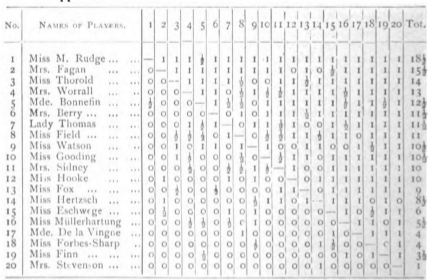
On Monday, July 5th, the Ladies’ Chess Club was crowded to witness the distribution of prizes, when Sir George Newnes, Bart., occupied the chair, and opened the proceedings with a neat speech. Sir George was followed by Mr. Atherley Jones, M.P. Other speakers were Mr. Hoffer and Mr. J. H. Blackburne, both of whom bore testimony to the manner in which the Tournament had been conducted, the latter stating that at first he thought the Ladies’ Tournament was a mistake, but coming amongst them and seeing the play from day to day, he admitted he had been in error, and that this, their first, Tournament had been a great success. Sir George Newnes then proposed a hearty vote of thanks to Mrs. Bowles for her invaluable services in connection with this the first International Ladies’ Tournament. Mrs. Bowles responded briefly, and the prizes were then distributed by Lady Newnes.
On Wednesday, July 7th, Lady Newnes gave an “At Home” to the players and friends, at Wildcroft, Wimbledon, when a very enjoyable time was passed.
Miss Mary Rudge has for long enjoyed the reputation of being the strongest lady chess player in the world, and the fact that she has carried off the first prize in the present Tournament, thereby becoming entitled to style herself lady chess champion of the world, is very satisfactory to her many friends. Miss Rudge comes of a chess playing family. for she was the daughter of Dr. Rudge, who practised as a surgeon in the little town of Leominster, where Miss Rudge was born. Dr. Rudge was very fond of chess, and played a fairly strong game, though he never took part in public chess. He taught the moves to his elder daughters, and they in turn taught Miss Mary. About fifteen years ago she won the second prize in Class II. at the now defunct Counties’ Chess Association Meeting, at Birmingham, her opponents of course being of the male sex. She also took a prize at the Grantham Meeting of the Counties’ Chess Association.
In 1890, at Cambridge, Miss Rudge won the Ladies’ Challenge Cup, also third prize in Class II, against male competitors. In 1896, she won first prize Class II. at the Southern Counties’ Tournament, when she played against a strong opposition of nine men. Some years ago Miss Rudge won the Bristol and Clifton Challenge Cup. In the Dublin Mail Correspondence Tourney, she tied for second and third prizes, but in the personal encounter she defeated Mr. Gunston, who carried off first prize, no mean feat when we remember Mr. Gunston’s strength as a player.
Mrs L. M. Fagan, the second prize winner, is, like Miss Rudge, of a good chess stock, for she is the daughter of Dr. Ballard, senr., and sister of Dr. Ballard. junr., both well known in chess circles; the latter specially recognised as a strong and brilliant amateur. Mrs. Fagan was born in Naples, her mother being an Italian lady, and for years Miss Ballard lived in her native country. She early learnt the moves of the game, but devoted herself chiefly to problems. In 1873 she was in Bombay, and contributed several problems to the Westminster Papers, under the non de plume of ‘Deesa.’ In 1882 she won the Chess Tournament of the Bombay Gymkhana (Sports Club); this was an even tournament, open to all, and Mrs. Fagin was the only lady competitor. For the last twelve years Mrs. Fagan has been out of chess, but the Ladies’ Chess Club brought her back to the ranks of active players, and her reputation has rapidly grown since she returned to chess life. Mrs. Fagan is well known outside of chess circles, for she is an active worker in the cause of woman’s emancipation, and is a prominent worker of the Women’s Emancipation Union. She is a woman of broad sympathies and profound convictions, and every movement for the best progress of the race meets with support at her hands. She is hon. lecture secretary of the Somerville Club, and is a member of the Fabian Society.
As a specimen of Mrs. Fagan’s club play, we give the following game, played in the “C” division of the London Chess League Competition, Mrs. Fagan playing No. 1 board for the Ladies’ Club.
Fagan – Richmond
London Chess League “C”, 1897
French Defence [C14]
1.e4 e6 2.d4 d5 3.Nc3 Nf6 4.Bg5 Be7 5.e5 Nfd7 6.h4
Altogether unsound, but leads to a lively game.
6…Bxg5 7.hxg5 Qxg5 8.Nf3 Qe7 9.Bd3 a6 10.Qd2 c5 11.dxc5 Nc6 12.0-0-0 Qxc5 13.Qg5 g6 14.Rh4 Qe7 15.Qg3 b5 16.Rdh1 Nf8 17.Rf4 Bb7
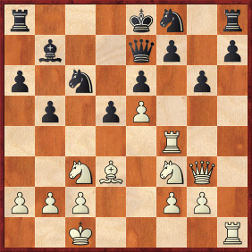
[FEN “r3kn1r/1b2qp1p/p1n1p1p1/1p1pP3/5R2/2NB1NQ1/PPP2PP1/2K4R w kq – 0 18”]
18.Bxb5 h6
18…axb5 19.Nxb5 gives White a fine attack.
19.Bxc6+ Bxc6 20.Rfh4 h5 21.Rf4 Kd8 22.Ng5 Be8 23.Rd1 Nd7 24.Rfd4 f5 25.exf6 Qxf6 26.Re1 Nf8 27.Qd6+
Time being call, Black resigned.
Mrs. Bowles (hon. sec. of the Ladies’ Chess Club) has rendered a great service to the cause of chess by organising this splendid Tournament. It is less than five years ago that enforced leisure, consequent upon the recovering from an illness, afforded her the opportunity of learning the moves of chess, and having mastered the elementary principles she became at once a great enthusiast of the game. She joined the Ladies’ Chess Club, then newly formed, and at once took an active part in its development. For the past two years she has been either its match captain, its secretary, or its treasurer, occupying indeed all three positions for the last twelve months. The members of the club are so perfectly satisfied with her labours on their behalf that they have left her no alternative but to continue her work. Though the task is almost beyond her strength. We have already referred to her inception of the idea of a Jubilee International Ladies’ Tournament, hut the amount of work she has got through in carrying her idea into effect is simply prodigious. Not less than 2,000 letters have been written by her own hand during the last twelve months in connection with the Tournament, and this in addition to her other chess work. She is full of good chess ideas, and has played many bright games, but her opportunities for actual play are restricted, owing to the pressure of her chess work in organising and managing the club and the Tournament She won the third prize in the second class of the Ladies’ Tournament, at Hastings.
We heartily congratulate Mrs. Bowles on the success of her spirited endeavours to prove that women can play chess. We delight in every forward movement of the game, and we are sure that the arousing of feminine interest in chess will tend to keep many a male chess votary true to his love for the game, who under other circumstances might have passed out of the ranks. The Tournament has been held, it has been a success, and it marks an epoch in the game, and we dare to say will not be the last of its kind. In planning, organising, and carrying out this unique chess tournament, Mrs. Bowles has done a good service to the game.
The following is a good specimen of Mrs. Bowles lively style of play.
Bowles – Amateur
1897
Blackmar Gambit [D00]
1.d4 d5 2.e4 dxe4 3.f3 exf3 4.Nxf3 Nc6 5.c3 Bg4
Always a loss of time in this and analogous positions.
6.Bc4 e6 7.0-0 a6

[FEN “r2qkbnr/1pp2ppp/p1n1p3/8/2BP2b1/2P2N2/PP4PP/RNBQ1RK1 w kq – 0 8”]
8.h3 Bh5 9.Qa4 b5 10.Bxb5 Bxf3
Here 10…axb5 should have been played, and then if 11.Qxb5 Bxf3 and Black has a piece for two pawns.
11.Bxc6+ Bxc6 12.Qxc6+ Ke7 13.Bg5+ Nf6 14.Nd2 Rb8 15.Nc4 Qd7 16.Ne5 Qd6 17.Qf3 Ke8 18.Bxf6 gxf6 19.Qxf6 Resigns
We desire also to warmly congratulate all the prize-winners on their various degrees of success, all of which was well deserved by them.
Mrs. Berry played a Ruy Lopez against Miss Rudge, who speedily got a much freer opening than usually results. We give a diagram of the position after Black’s 18th move (Qg5).
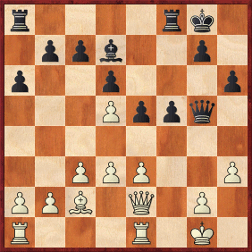
[FEN “r4rk1/1ppb2p1/p2p3p/3Pppq1/8/2PPP2P/PPB1Q1P1/R3R1K1 w – – 0 19”]
Miss Rudge played a Giuoco Piano – which is evidently a favourite with her, and seems very suitable to her quiet and steady style of play – against Mrs. Fagan; pieces were exchanged, and a very equal game resulted. We give a diagram after White’s 23rd move (Ne4).
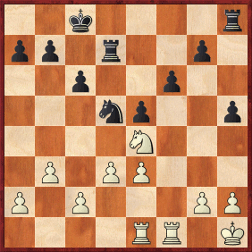
[FEN “2k4r/pp1r2p1/2p2p2/3np2p/4N3/1P1PP3/P1P3PP/4RR1K b – – 0 23”]
Lady Thomas played a Centre Counter against Miss Rudge, the game proceeding very steadily. The following diagram shows the position after White’s 12th move (f4).

[FEN “r2q1rk1/pp1nbppp/2p1pnb1/8/2BP1P2/P1N1B1N1/1PP3PP/R2Q1RK1 b – – 0 12”]
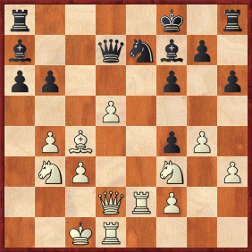
[FEN “r4k1r/b2qnbp1/pp3p1p/3P4/1PB2pP1/1NP2N1P/3QRP2/2KR4 w – – 0 26”]
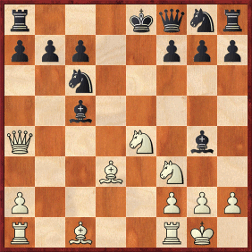
[FEN “r3kqnr/ppp2ppp/2n5/2b5/Q3N1b1/3B1N2/P4PPP/R1B2RK1 w kq – 0 14”]
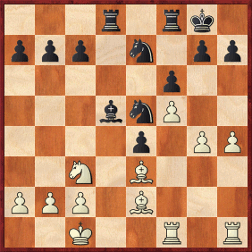
[FEN “3r1rk1/ppp1n1pp/5p2/3bnP2/4p1PP/2N1B3/PPP1B3/2K2R1R w – – 0 22”]
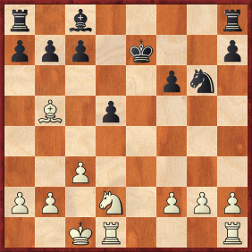
[FEN “r1b4r/ppp1k2p/5pn1/1B1p4/8/2P5/PP1N1PPP/2KR3R b – – 0 17”]
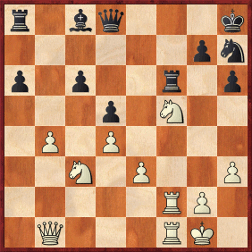
[FEN “r1bq3k/6pn/p1p2r1p/3p1N2/1P1P4/2N1P2P/5RP1/1Q3RK1 b – – 0 25”]
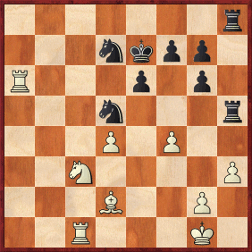
[FEN “7r/3nkpp1/R3p1p1/3n3r/3P1P2/2N4P/3B2P1/2R3K1 b – – 0 34”]
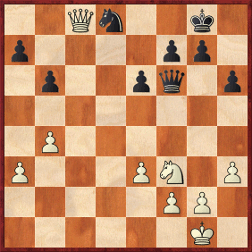
[FEN “2Qn2k1/p4pp1/1p2pq1p/8/1P6/P3PN1P/5PP1/6K1 w – – 0 26”]
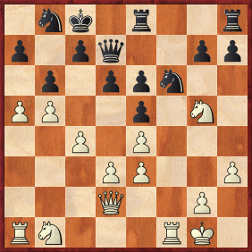
[FEN “1nk1r2r/p1pq2pp/1p1ppn2/PP2p1N1/2P1P3/3PP2P/3Q2P1/RN3RK1 b – – 0 17”]

[FEN “3r4/1b3pk1/pn4p1/1pp1P1Np/5P2/P1P2NPP/1P6/4R1K1 w – – 0 31”]
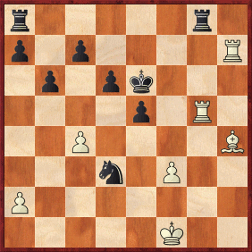
[FEN “r5r1/p1p4R/1p1pk3/4p1R1/2P4B/3n1P2/P7/5K2 w – – 0 1”]
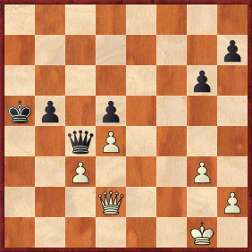
[FEN “8/7p/6p1/kp1p4/2qP4/2P3P1/3Q3P/6K1 w – – 0 53”]
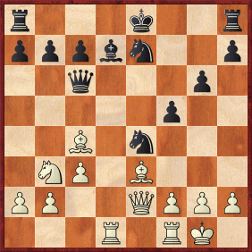
[FEN “r3k2r/pppbn2p/2q3p1/5p2/2B1n3/1NP1B3/PP2QPPP/3R1RK1 w kq – 0 19”]
Download The Skittles Room in PDF format. All previous columns are available in the ChessCafe.com Archives.
The ChessCafe.com Skittles Room is open to reader contributions. If you have an article for publication, write to us via our contact page. If we publish your article, we will send you a free Inside Chess 1988-2000 DVD, or provide one-year free access to ChessCafe.com!
Copyright 2015 ChessEdu.org. All Rights Reserved.
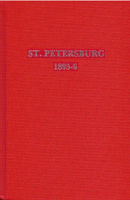
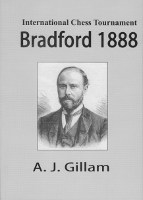
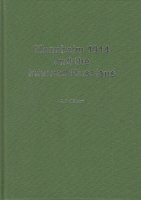
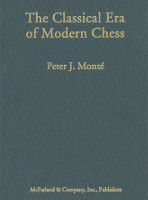
Leave a Reply